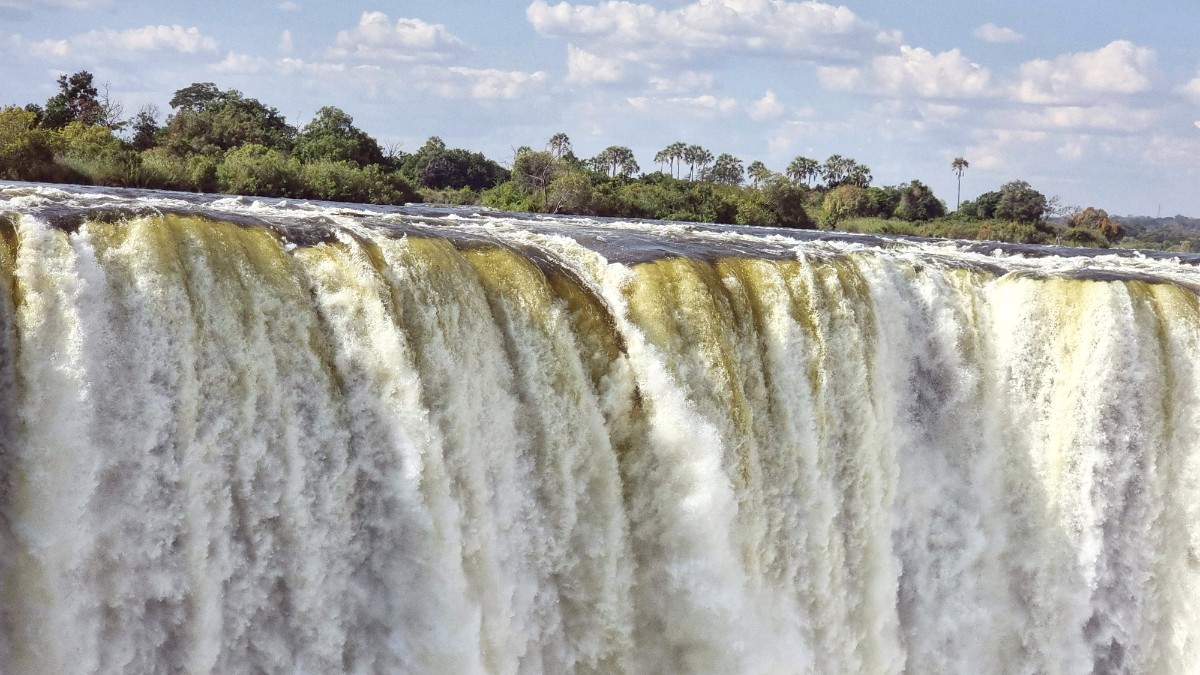
Local cuisine in both Zimbabwe and Zambia bases itself on staple starches served with relishes. These stews meat, fish, or vegetables. Influences from Southern African cooking are strong.
The growth of tourism introduced a wider array of international dining options. Traditional meals a significant part of daily life for locals.
Broadly similar across the border. Access to fresh fish from Zambezi a local feature.
Tourist establishments international palates, a mix of local and Western dishes.
Find more authentic local food in markets or smaller, local eateries.
The staple food. Stiff porridge served hot with various stews like beef (nyama), chicken, or vegetable greens (muriwo).
Found at local eateries or lodges with cultural experiences.
Kapenta: small dried fish, sardine-like, cooked with tomatoes and onions. Bream: freshwater fish from Zambezi, grilled or fried.
Kapenta at local markets. Bream at river-side restaurants.
Some restaurants game meat like warthog, kudu, or crocodile.
Check ethical sourcing practices.
Fried dough snacks, similar to doughnuts.
A common and simple snack.
High-end hotels and lodges. The Livingstone Room at The Victoria Falls Hotel or luxury river lodges. International cuisine with local influences.
Numerous options exist in both Victoria Falls town and Livingstone. Cater to tourists with international menus.
Local takeaways or small cafes, often near markets or residential areas, sadza/nshima cheaply.
Most tourist restaurants international dishes. Italian, Indian, and standard grill/steakhouse options common.
Familiar choices for those seeking them.
Local markets (Livingstone town) fresh produce, sometimes cooked local food.
More for local shopping than a dedicated tourist dining experience.
Typically a lighter meal.
Can be a substantial meal, or a quicker affair.
The main meal, often eaten later in the evening.
Bottled water and international soft drinks widely available.
Awareness limited outside higher-end establishments. Communicate needs clearly.
Sadza/Nshima is gluten-free (maize).
Supermarkets in town stock basic provisions. Self-catering control over ingredients.
No specific halal/kosher restaurants.
Research restaurants in advance. Contact your accommodation for guidance.
Local markets sometimes offer fresh fruits and vegetables.
Some lodges or local operators traditional cooking demonstrations or classes.
Food tours can be incorporated into cultural village visits, insight into local food preparation.
Less common as mainstream tourist activity. Possible in agricultural areas through specialized tours.
Unique setting to enjoy a meal while watching sunset over the river, with wildlife viewing.
Scenic views, wildlife sightings
Immersive cultural experience with traditional food, music, and dance. Lively evening with local entertainment.
African cuisine buffet
Dining out Victoria Falls an enjoyable part of your trip. Try local flavors like sadza and bream for an authentic experience.
Book fine dining restaurants in advance, especially during peak season. Explore dinner cruises for an unique evening on the Zambezi.
Exercise caution with street food regarding hygiene. Inform restaurants about any dietary restrictions when booking or ordering.
Beyond the main tourist spots, a culinary adventure through local eateries and markets reveals the true flavors of Victoria Falls.